Table of Contents
The geography of Saudi Arabia is a captivating blend of diverse landscapes and historical significance. Situated in the Middle East, this nation’s geographic location has played a pivotal role in shaping its history and cultural identity.
Nestled between the Red Sea and the Arabian Gulf, Saudi Arabia’s geography beckons adventurous travelers with its vast deserts, impressive mountain ranges, and ancient historical sites. From exploring the vastness of the Rub’ al Khali, the largest continuous sand desert in the world, to delving into the cultural tapestry of Riyadh, Saudi Arabia’s diverse landscapes and rich history offer an unforgettable journey for intrepid tourists seeking a unique and enriching experience.
Saudi Arabia physical geography paints a picture of awe-inspiring natural wonders. From the rock formations and archaeological treasures of Al-Ula, representing the nation’s rich historical heritage, to the diverse ecosystems that span from the coastal mangroves to the arid deserts, Saudi Arabia stands as a testament to nature’s grandeur.
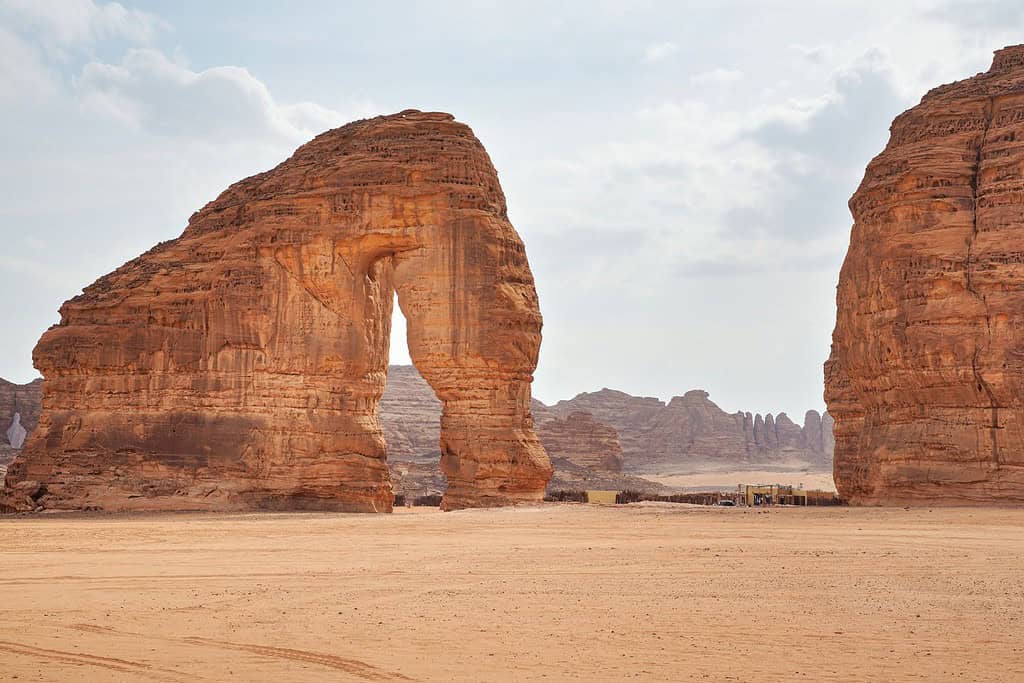
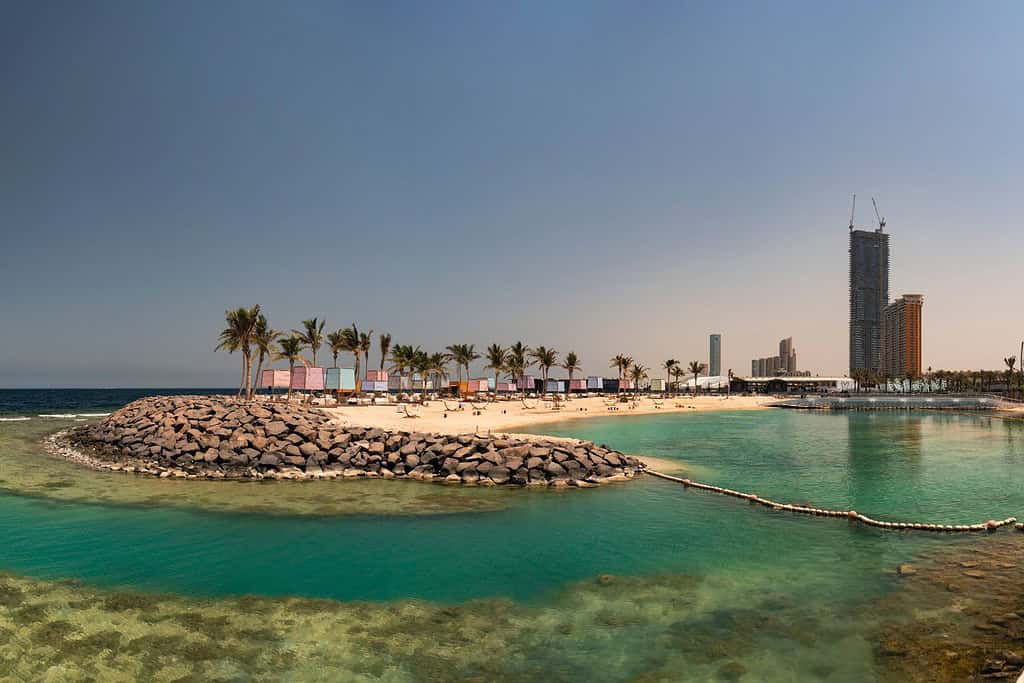
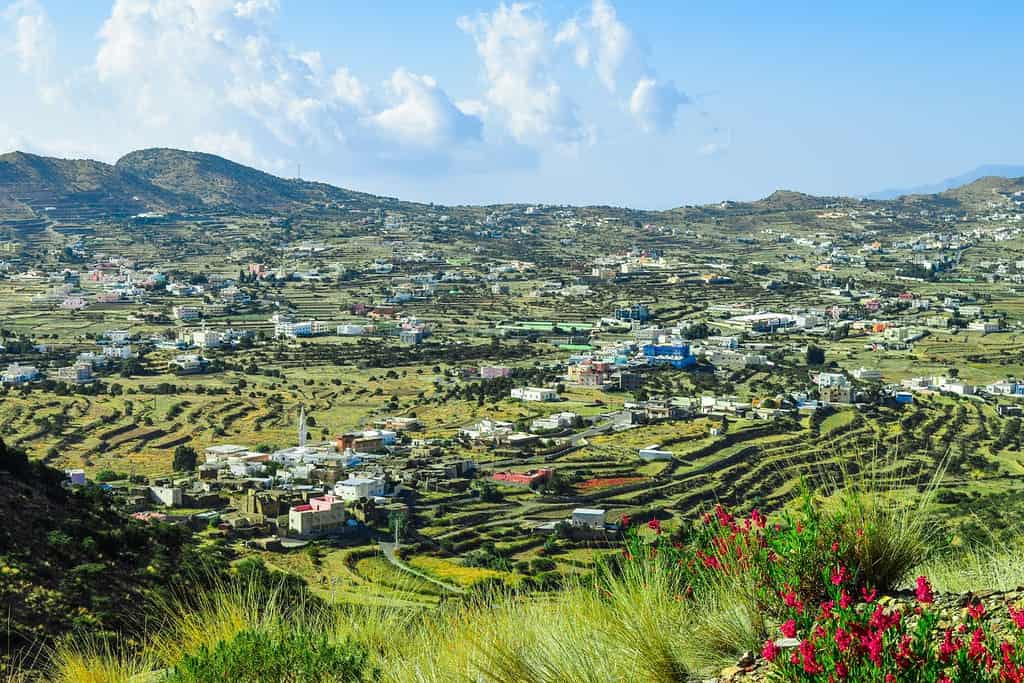
Top Geographic Features of Saudi Arabia
- Rub al Khali (Empty Quarter): Spanning the southern part of Saudi Arabia, this is one of the largest continuous sand deserts in the world, influencing the country’s topography and climate.
- Najd Plateau: Located in the central region, the Najd is a vast plateau marked by rocky areas and wadis, shaping much of Saudi Arabia’s landscape.
- Hejaz Mountains: These mountain ranges on the western side of Saudi Arabia are crucial landmarks, with the cities of Mecca and Medina located within them.
- Red Sea Coastline: Stretching along the western edge of the country, this coastline plays a significant role in the nation’s trade and tourism, offering beautiful coral reefs and marine life.
- Sarawat Mountains: An extension of the Hejaz Mountains, they span the length of the country’s western border, providing varied topography and climate regions.
- Wadi Al-Rummah: One of the longest riverbeds in the Arabian Peninsula, it runs through the northern part of the country, influencing the local ecosystems.
- Al-Ahsa Oasis: Situated in the eastern part of Saudi Arabia, this oasis is one of the world’s largest, providing vital water resources for agriculture in an otherwise arid region.
- Nefud Desert: Located in the northern part of the country, this desert is characterized by its red dunes and unique fauna.
- Asir Province: Located in the southwestern part of Saudi Arabia, this region is known for its cooler climate, terraced fields, and rich biodiversity.
- Jabal Sawda: The highest peak in Saudi Arabia, located in the Asir province, offers a unique vantage point in an otherwise flat landscape.
These Saudi Arabia geographic features play a crucial role in shaping Saudi Arabia’s landscape, climate, and cultural history, making them essential elements in defining the country’s geography.
Saudi Arabia Geography
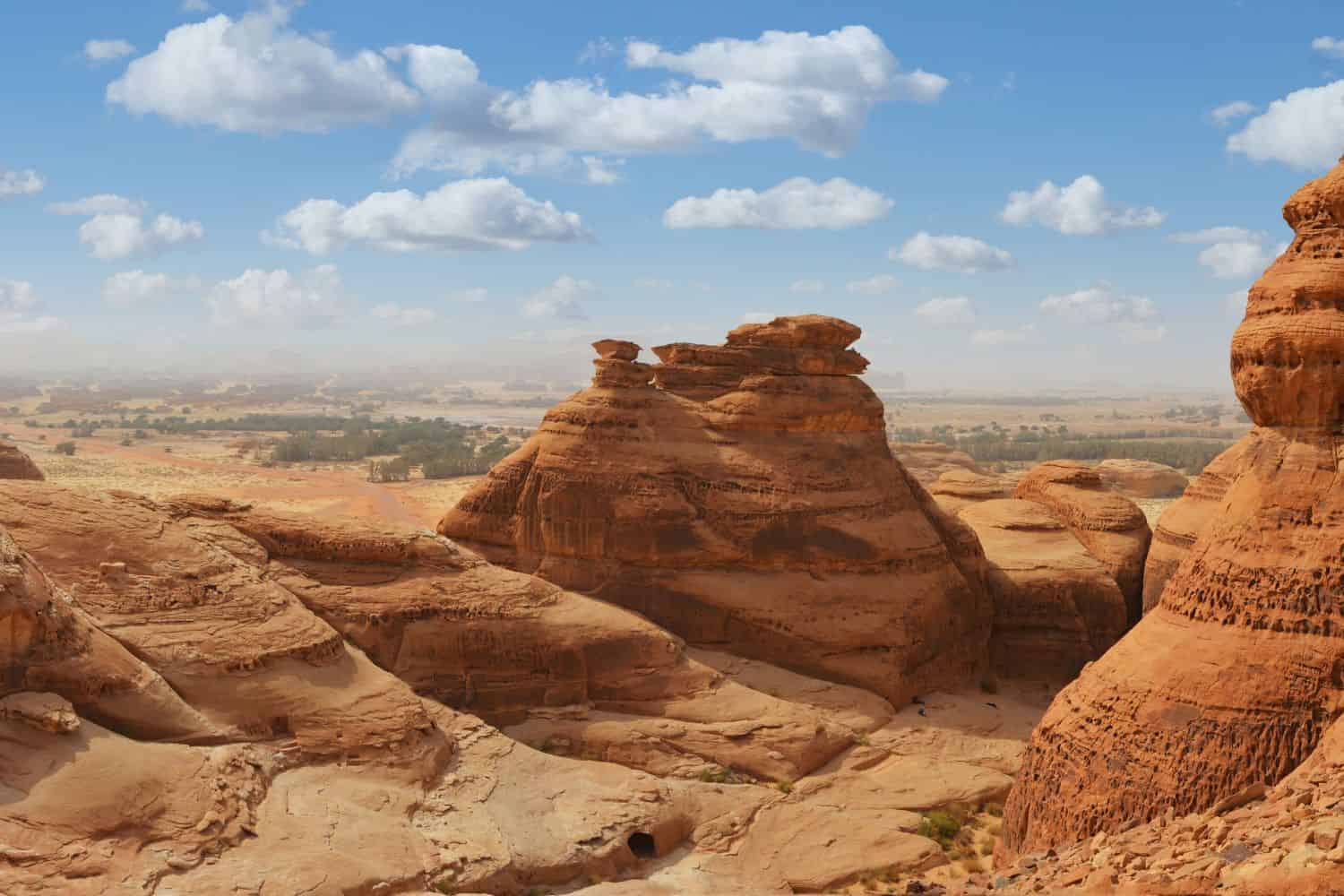
Exploring the Saudi Arabia National Geographic canvas unveils a mesmerizing variety of geographic features. From the vast Rub’ al Khali desert to the fertile Al-Hasa Oasis and the historically rich city of Diriyah, the country displays a captivating array of natural wonders.
- Mountain Ranges – The Crown of Diversity: Just as documentaries spotlight prominent mountain ranges, Saudi Arabia is home to the magnificent Sarawat range. These rugged peaks not only contribute to the nation’s scenic allure but also present unique biodiversity and have deeply influenced its cultural tapestry.
- Oases – An Oasis of Life: Saudi Arabia’s Al-Hasa Oasis, with its lush date palms, is reminiscent of the dreamy landscapes depicted in images. These oases, symbols of life in the arid desert, highlight the region’s geological richness.
- Deserts – The Golden Sands of Time: Just as documentaries illuminate vast terrains, Saudi Arabia’s Rub al Khali, or Empty Quarter, showcases sweeping dunes that have witnessed countless historical events. This vast desert narrates tales of Bedouin traditions and the nation’s ancient connections.
- Historical Sites – Journey Through Ages: Saudi Arabia’s historical sites, like the Nabatean ruins of Al-Ula, echo tales of expeditions that delve into ancient civilizations. These remnants underscore the nation’s deep-rooted history and traditions.
- Ethnic Diversity – A Mosaic of Traditions: In line with National Geographic’s emphasis on varied cultures, Saudi Arabia is a fusion of ethnic groups, each bringing forth distinct traditions, languages, and customs that make up a rich cultural tapestry.
- Wildlife – A Desert Sanctuary: Saudi Arabia’s protected areas, such as the Asir National Park, are akin to the conservation endeavors showcased on screen. These regions provide invaluable habitats for a plethora of species, safeguarding biodiversity in a unique environment.
- Geological Wonders – Nature’s Spectacle: The country’s geological phenomena, like the Al Wahbah Crater, epitomize Saudi Arabia’s natural allure amidst the vast deserts. Such formations exemplify the potent forces of nature sculpting the landscape.
- Remote Exploration – Secrets of the Desert: The isolated and mystical regions of the Rub’ al Khali invite explorers, much like adventures into unknown realms. This immense sea of sand offers insights into pristine landscapes and unique desert ecosystems.
Saudi Arabia’s geographic highlights are accentuated by the presence of the Sarawat mountain range. These formidable peaks, which stretch along the country’s western flank, provide a dramatic contrast to the nation’s desert-dominated terrain. Historic routes, once major trade corridors, traverse these mountains, linking regions of the Arabian Peninsula.
Meandering gracefully through the Saudi terrain are the essential water bodies like Wadi Hanifa, crucial for sustaining life in such arid conditions. Additionally, the vast expanses of the Rub’ al Khali desert and the rocky plateaus contribute to the nation’s distinct geography.
Saudi Arabia Geographic Location
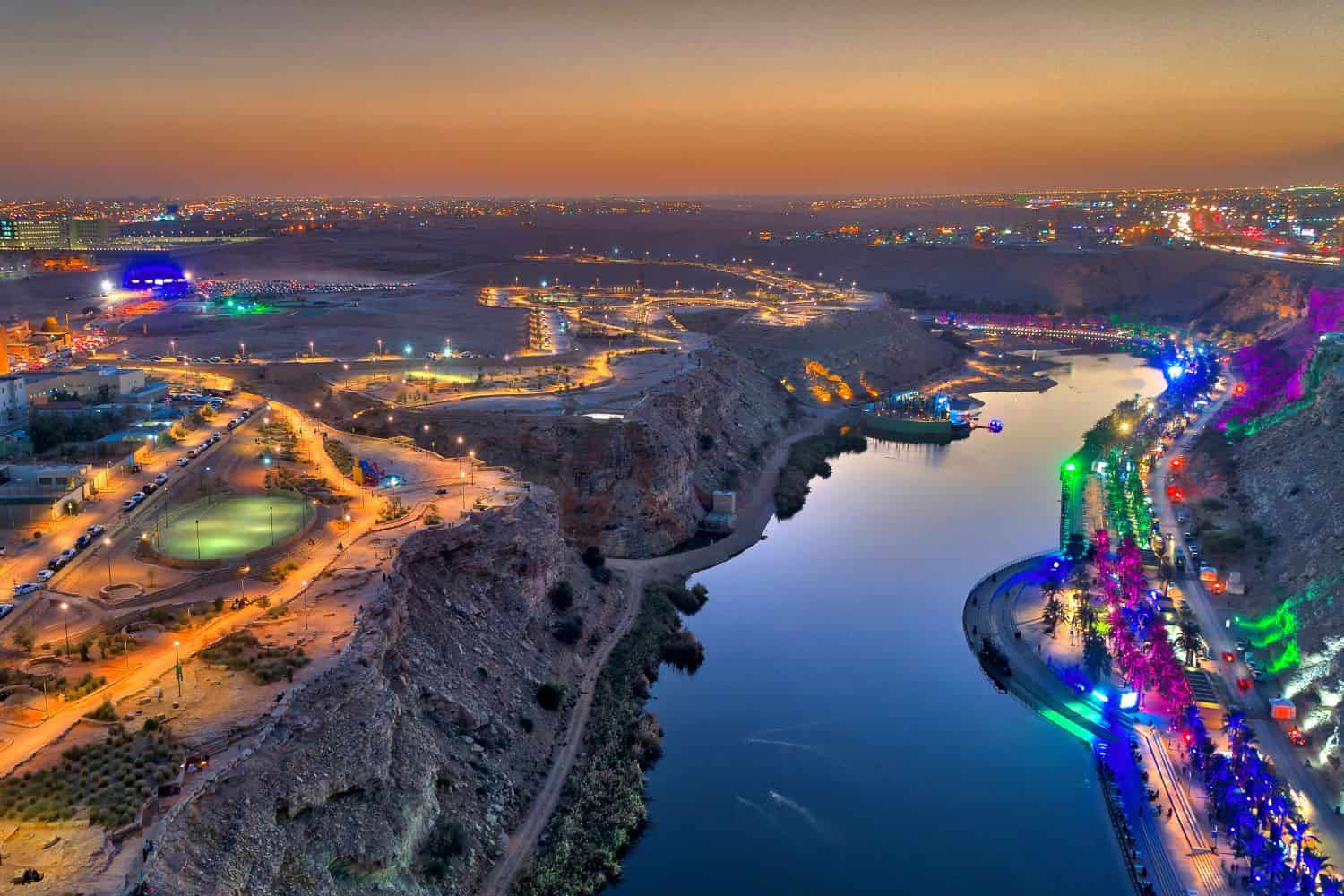
Saudi Arabia’s geographic location is highly strategic, and its position has been pivotal throughout history. Located in the Middle East, bordering the Arabian Peninsula, the country has been a nexus for trade, religion, culture, and ideas, underscoring its historical importance.
Borders of Saudi Arabia
Saudi Arabia shares borders with eight countries. Here is Saudi Arabia’s physical geography with the neighboring countries and the approximate total length of each border:
- Jordan: The border between Saudi Arabia and Jordan is approximately 731 kilometers long.
- Iraq: The border between Saudi Arabia and Iraq is approximately 814 kilometers long.
- Kuwait: The border between Saudi Arabia and Kuwait is approximately 221 kilometers long.
- Qatar: The border between Saudi Arabia and Qatar is approximately 60 kilometers long.
- United Arab Emirates: The border between Saudi Arabia and the United Arab Emirates is approximately 457 kilometers long.
- Oman: The border between Saudi Arabia and Oman is approximately 676 kilometers long.
- Yemen: The border between Saudi Arabia and Yemen is approximately 1,458 kilometers long.
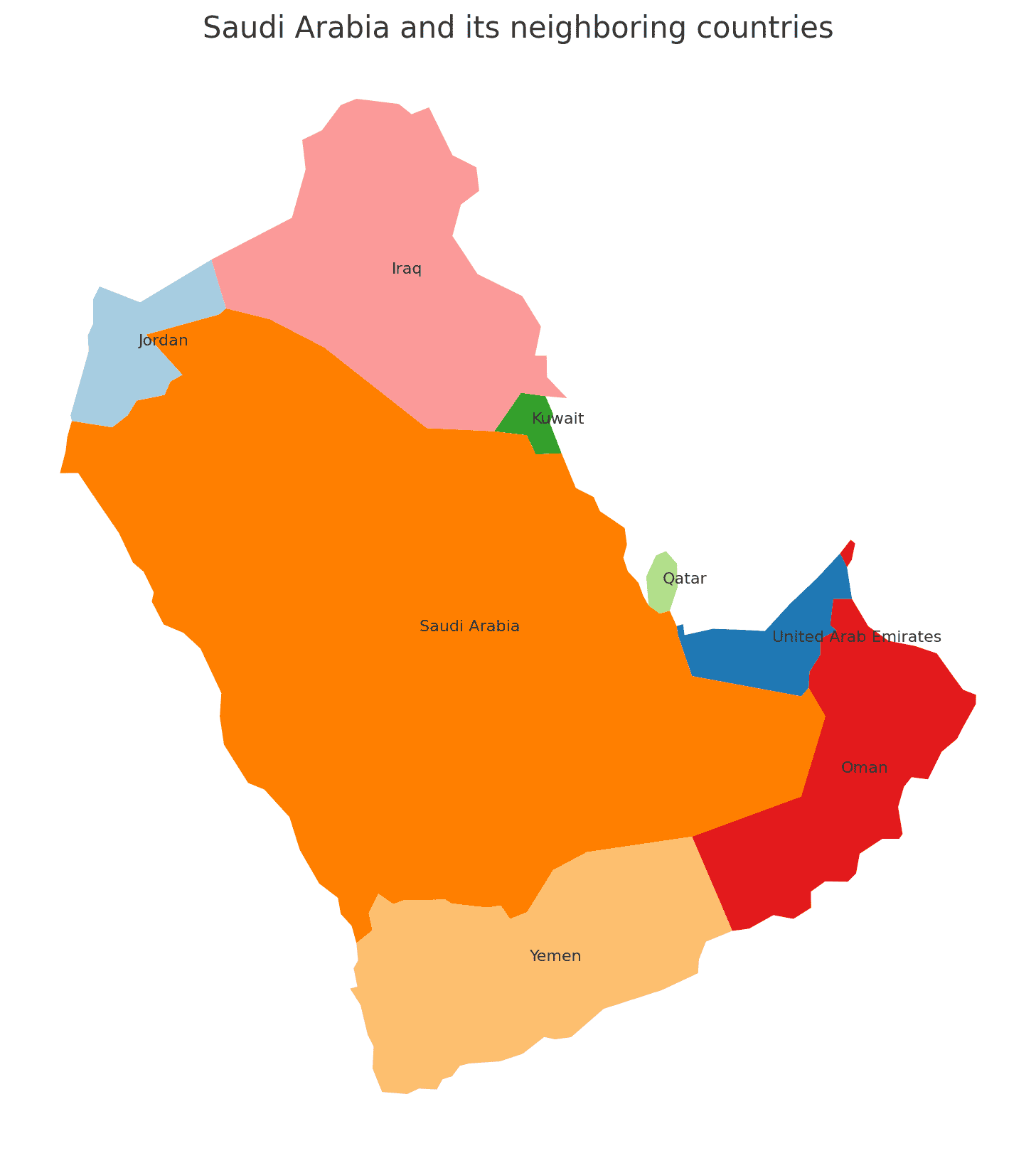
| Saudi Arabia Neighboring Country | Border Length (Approximate) |
|---|---|
| Jordan | 731 kilometers |
| Iraq | 814 kilometers |
| Kuwait | 221 kilometers |
| Qatar | 60 kilometers |
| United Arab Emirates | 457 kilometers |
| Oman | 676 kilometers |
| Yemen | 1,458 kilometers |
These international borders define Saudi Arabia’s connections to different regions and emphasize its geopolitical significance as a hub in the Middle East.
geography of Riyadh Saudi Arabia
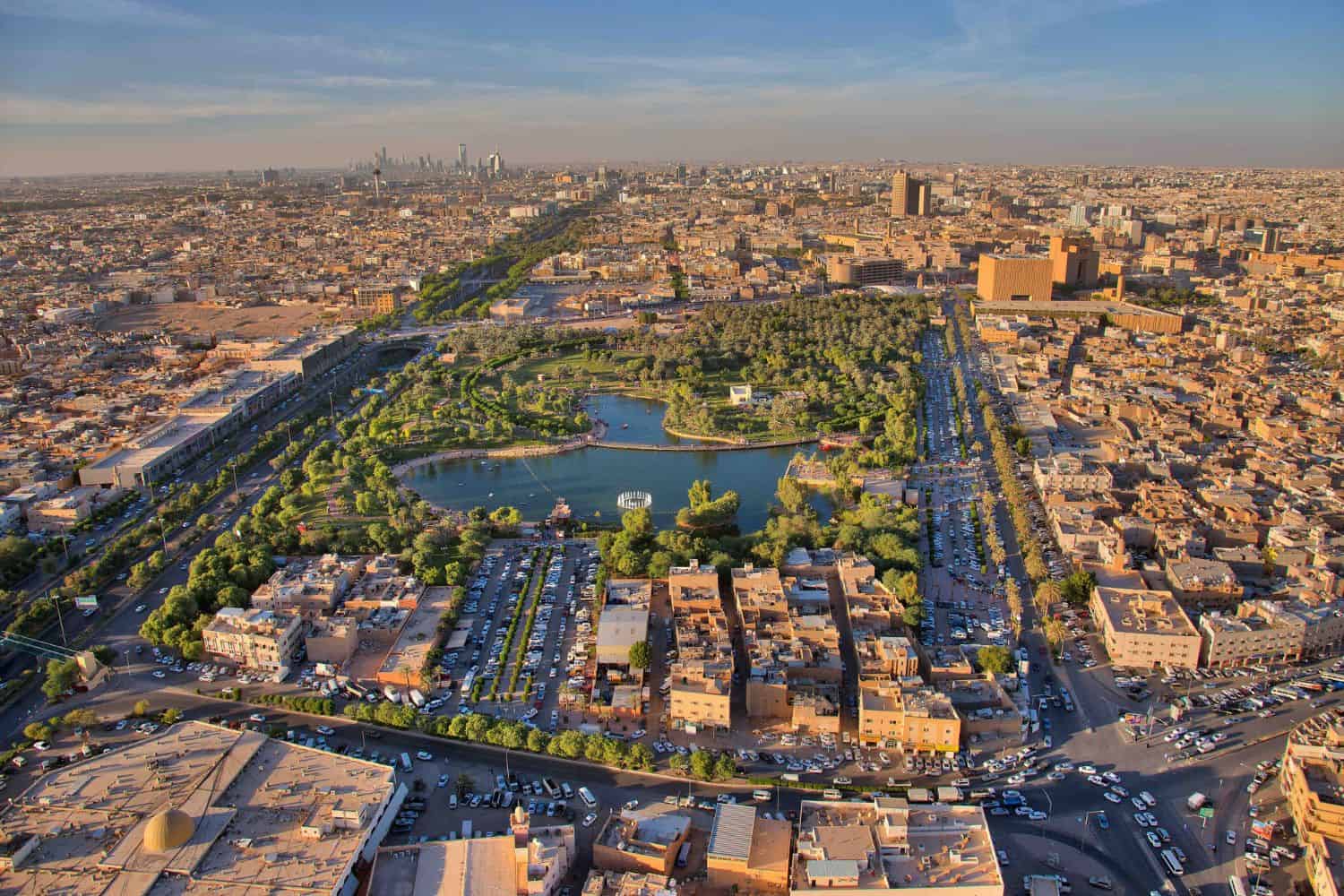
As the capital city of Saudi Arabia, Riyadh is a captivating microcosm of the country’s human geography. Here, diverse ethnic groups, including Saudis, Hijazis, Najdis, and Eastern Arabs, coexist, enriching the city’s vibrant cultural tapestry.
Riyadh, the capital city of Saudi Arabia
- City of Contrasts: Riyadh is known for its stark contrasts, where futuristic skyscrapers coexist with traditional neighborhoods, creating a unique blend of old and new.
- Arabian Peninsula: Riyadh is situated in the heart of the Arabian Peninsula, playing a significant role in its trade and geopolitics.
- Riyadh’s Elevation: The city is surrounded by deserts and plateaus, giving it its distinctive geographical characteristics.
- Green Spaces: Riyadh is home to several beautiful parks and gardens, including King Abdullah Park, offering a serene escape amidst the bustling city.
- Riyadh’s Historical Significance: With a history deeply rooted in ancient times, Riyadh has witnessed various epochs and played a pivotal role in Middle Eastern politics and trade.
- Diverse Architecture: The city showcases a diverse architectural heritage, reflecting influences from traditional Najdi, Hejazi, and modern styles.
- Cultural Heritage: Riyadh embraces its rich cultural heritage, and its traditions and values can be seen and experienced throughout the city.
- Masmak Fortress: The historic Masmak Fortress, located in the heart of the city, is an iconic symbol of Saudi Arabia’s foundational history.
- Riyadh’s Economy: The city serves as Saudi Arabia’s economic and administrative center, attracting people from all over the country seeking opportunities and education.
- Population Growth: Riyadh has experienced steady population growth, with a significant influx of residents from various provinces, leading to urbanization and infrastructure challenges.
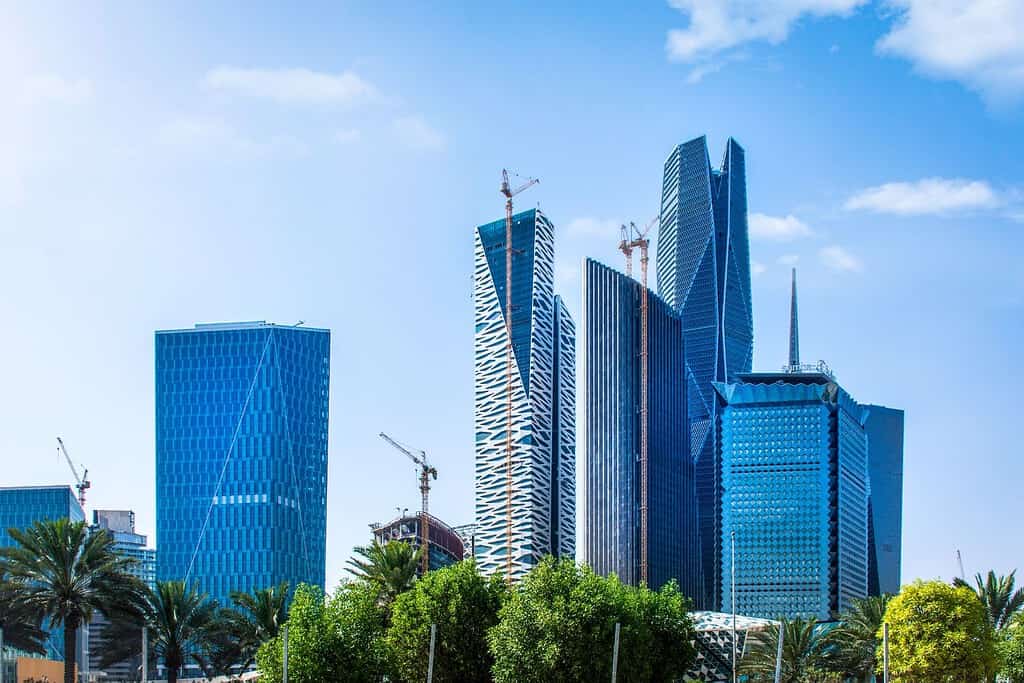
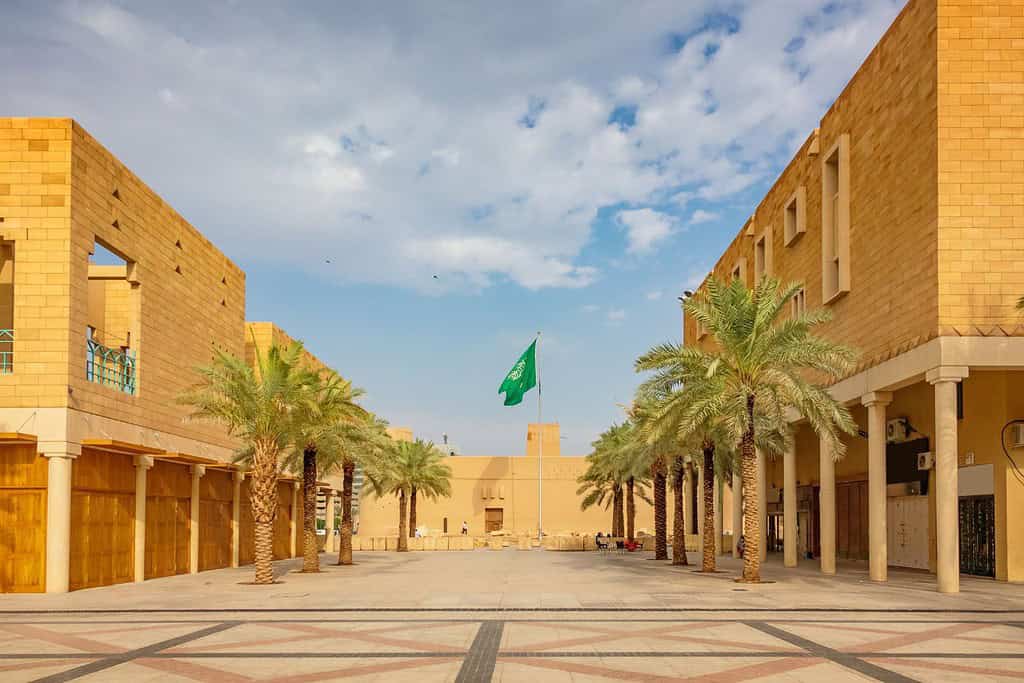
Historical Geographical Importance of Saudi Arabia
Throughout the ages, Saudi Arabia’s geographical significance has made it a sought-after stage for historical events. As empires and nations emerged and dissipated, from the ancient Nabateans to the Ottoman Empire and subsequent Arab states, Saudi Arabia’s geographic position played a crucial role in shaping the world’s history.
- Strategic Gateway: Saudi Arabia’s location, bridging Africa and Asia, and with proximity to Europe, have made it a strategic point for trade, cultural exchange, and religious pilgrimages throughout history.
- Ancient Trade Routes: The famous Incense Route traversed through Saudi Arabia, connecting various ancient civilizations and facilitating the exchange of goods, ideas, and cultures.
- Birthplace of Islam: Mecca and Medina, the two holiest cities in Islam, are located in Saudi Arabia. This made the region pivotal during the Islamic expansion in the 7th century.
- Crusades and Islamic Defense: In the Middle Ages, Saudi Arabia witnessed numerous confrontations during the Crusades, with Muslim forces defending the region against European invaders.
- Oil Reserves: In the 20th century, Saudi Arabia’s vast oil reserves transformed its importance on the global stage, impacting economies and geopolitics.
- Historical Dynasties: The region has been home to various empires and dynasties, including the Nabateans who built the city of Petra, and the Al Saud dynasty, which formed the modern state of Saudi Arabia.
- Ottoman Occupation: The Ottoman Empire’s presence in the 16th to early 20th centuries influenced Saudi Arabia’s political and cultural landscapes.
- The Desert and Bedouins: The vast Arabian desert and the iconic figure of the Bedouin have become symbols of the nation’s cultural and historical identity.
- Influence of Islamic Art and Architecture: Saudi Arabia’s position as the cradle of Islam has given rise to distinctive art and architecture, especially in religious structures like the Masjid al-Haram in Mecca.
The geographical position of Saudi Arabia is a vast expanse of historical and cultural significance. As the heartland of the Arabian Peninsula, this desert-dominated nation boasts a landscape filled with ancient trade routes, historical cities, and a rich Bedouin heritage. Home to the two holiest cities in Islam, Mecca and Medina, Saudi Arabia holds a unique place in the Islamic world and global cultural consciousness.
In conclusion, Saudi Arabia’s geographical location has deeply influenced its historical and cultural development. Situated at the crossroads of Asia, Africa, and Europe, it has been a pivotal player in the history of trade, religion, and geopolitics. The country’s strategic position, along with its vast oil reserves, continues to play a central role in shaping the geopolitics of the Middle East and the wider world today.
More About Saudi Arabia
[the-post-grid id=”50418″ title=”Saudi Arabia Main page”]
